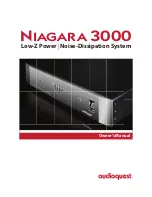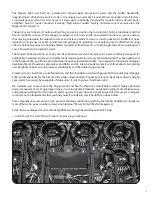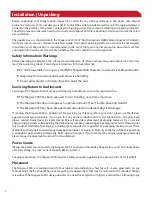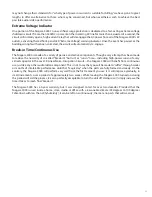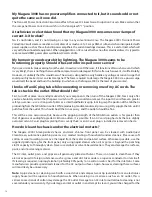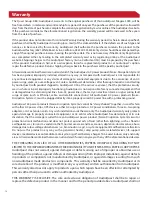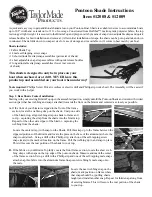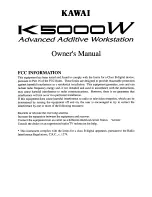
7
audio/video products benefit greatly from these devices, in most cases, the Niagara 3000 will not. You are welcome
to experiment.
Placement or proximity to other components is not critical, and, under standard use, the Niagara 3000 does not
produce any appreciable heat. The Niagara 3000 may be rack-mounted in a standard 19” rack by attaching the
included Niagara Series 2-RU rack ears. To attach the optional rack ears to the Niagara 3000 chassis, first remove
the three Torx flathead screws from the front portion of both the left and right sides of the cover assembly. Next,
mount the rack ears flush against the back of the Niagara 3000’s front panel. Finally, secure the rack ears into place
by installing the rack-mount kit’s Phillips pan head SEMS screws.
When tight installations do not provide adequate room in a rack, shelf, or cabinet, the Niagara 3000 can actually
be placed on its side. Such placement will pose no safety or performance compromises, but we recommend
placing a soft towel or carpet under the unit to prevent the chassis and front panel from being scratched or
marred in any way.
Connection to Audio/Video Components
AC Cable Routing
Once the Niagara 3000 is placed, a 15-amp-rated (or greater), high-current AC cord must be connected to the rear-
panel AC inlet (IEC-C14) connector. The AC cord must have an IEC-C13 female end connector and a grounded male
120VAC Edison/NEMA plug for use in North America or Taiwan. We highly recommend the use of any AudioQuest
NRG-Z, Wind Series, or High-Current Storm Series AC cable. Because these cables feature conductors that have
been meticulously controlled for proper low-noise directionality, they will ensure the best possible results from
the Niagara 3000’s Ground-Noise Dissipation Technology.
When facing the Niagara 3000’s rear panel, the IEC-C14 inlet is located on the unit’s lower-left side. The AC inlet
cord must be connected to an appropriate AC outlet (see “Power Source,” page 4). Though a conventional AC outlet
will function safely and yield high performance, for the very best sonic performance, we strongly recommend the
installation of the AudioQuest NRG Edison 15 or 20.
Whenever possible, it is best to keep at least three inches (approximately 7cm) between AC cables and any signal
cable. When this is not possible in a practical layout of system cabling, crossing the AC cables to signal cables at 90
degrees is best to minimize induced noise.
High-Current | Low-Z Power Outlets
There are two High-Current/Low-Z Power outlets (labeled “1” and “2”). These outlets feature our Transient Power
Correction Technology (55 amps peak - up to 25 mS duration), and are designed to enhance the performance
of power amplifiers via our circuit’s low-impedance transient current reservoir. Power amplifiers, monoblock
amplifiers, integrated amplifiers, powered receivers, or powered subwoofers should be connected to these two
outlets. Please set the rear panel switch to “energized” or “1,” as the default position. This affects a portion of the
Transient Power Correction Circuit. (See “Rear-Panel Power Correction Switch.”)
Regardless of class of operation or circuit topology (valve, solid-state, digital, or otherwise), the Transient Power
Correction Circuit will not compress the current of any power amplifier. Quite to the contrary, it will improve the
amplifier’s performance by supplying the low-impedance current source that the amplifier’s power supply so
desperately needs.
Summary of Contents for Niagara 3000
Page 1: ...Owner s Manual NIAGARA 3000 Low Z Power Noise Dissipation System...
Page 18: ...18...
Page 19: ...19...

